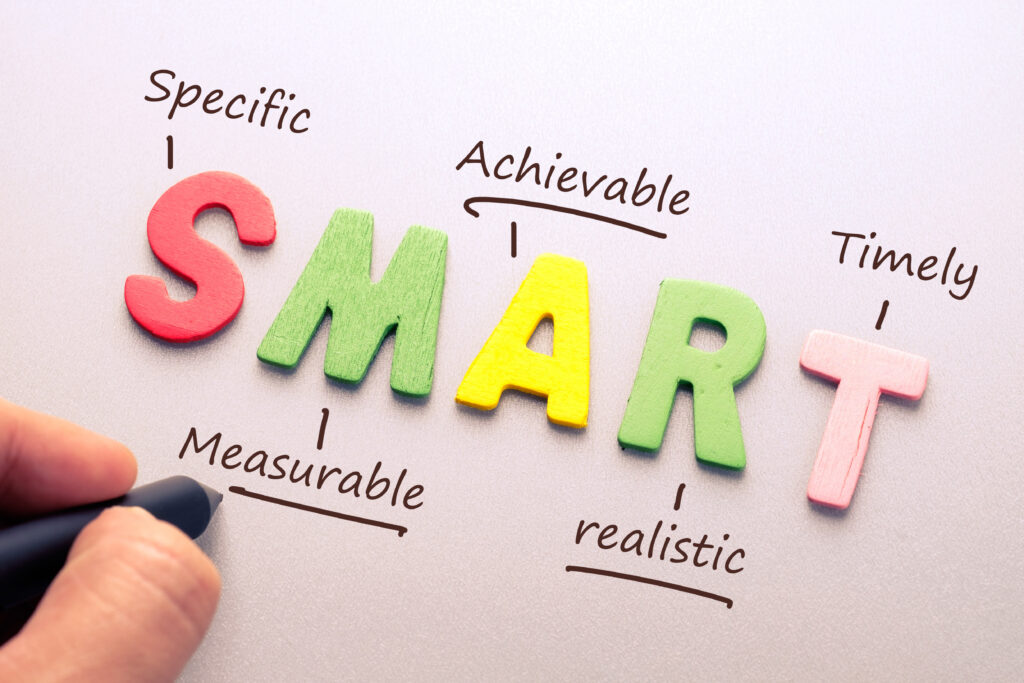Setting goals is the first step in turning the invisible into the visible. —Tony Robbins
You hear people say a goal is just an idea until it’s written down. Writing a goal down is a way of committing to it. Committing goals to paper helps increase focus as well as add motivation and excitement. Written goals provide the opportunity to create specific and measurable goals. With written goals, there is clarity on the direction you’ve identified, which helps you discern which things, activities, and people aren’t supporting your goals. How do you determine what your short-, mid, and long-term goals should be?
The first step is to visualize where you want to be in 5 years, understanding your end goal. Though you may know that you want to grow and evolve, you may not be able to identify your destination goals right away. Take some time to become clear about where you want to be when all your goals have been met.
Now that you know where you are headed, create SMART goals as a roadmap to get there. SMART goals must be.
• Specific
• Measurable
• Achievable
• Realistic
• Time-bound
In order to begin identifying your goals, take a moment to ask yourself the following questions:
• What are your aspirations and goals for your life?
• What are the things that hold the most significance for you? What aligns with your values, skills, and passions?
• What are the primary goals or aspirations you have for your life?
• What is the one thing you fear you might regret not doing if you unexpectedly run out of time?
The answers to the questions above determine your “goal destinations.” Ensure that each goal is not merely a stepping stone towards another goal. If it is, remove it from your list of destinations.
The next step is to create time frames for when you would like to reach your specific goal. With your destination goals written down, the next step is to think about what you need in order to achieve them. Maybe you need to further your education, learn a new skill, or save/make more money.
For each milestone step identified, write down the things required to reach and complete them. These steps become your checklist for achieving your destination goals and are a great way to track your progress. Now that you have a checklist to work from, create a timeframe that you will complete each step. If the step doesn’t have an inherent completion date, create one of your own. Be realistic in creating your timeframes, all steps and their timeframes need to be achievable.
From this checklist, you can now prioritize the milestones into short-, mid-, and long-term steps. Create action items for each step so you have a clear schedule to work from, knowing what needs to be completed and by when. Review your progress along the way, making any needed adjustments along the way. During your review, take time to celebrate what you have accomplished, and what still needs to be done on the checklists for each goal destination, modifying your checklist and action items if needed.
Even though it may require several years to reach all the goals you have set for yourself, your success is inevitable. This is because you have put in the necessary effort and have a well-defined plan in place to guide you toward your desired outcomes. Creating goals is a reliable roadmap for achieving the purpose of your life.
Rachel Graham is dedicated to helping you understand how your goals are connected to your life’s purpose. She explains how she discovered her life’s purpose through a significant personal event and outlines the goals she set to fulfill that purpose. Contact her today to learn more about how you can discover your life’s purpose by setting and achieving your own destination goals.

